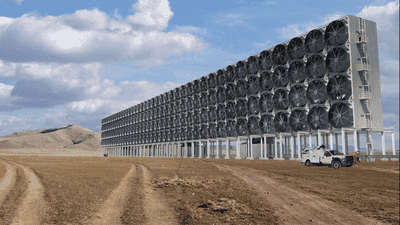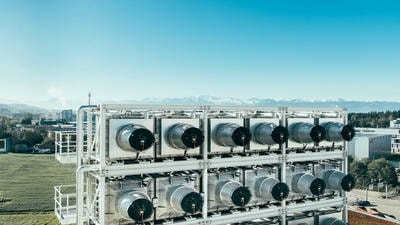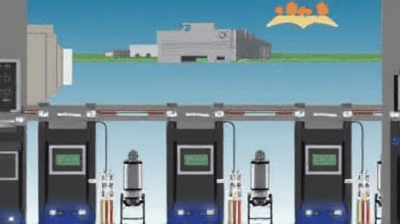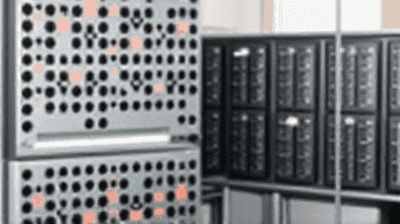
As the world grapples with the challenge of climate change, innovative technologies are emerging to help mitigate the effects of rising greenhouse gas levels. One such technology that has garnered significant attention in recent years is Direct Air Capture (DAC). This method aims to remove carbon dioxide (CO2) directly from the atmosphere, presenting a novel approach to combatting climate change.
Direct Air Capture refers to technologies designed to capture CO2 from the ambient air. Unlike traditional carbon capture methods, which focus on point sources of emissions like power plants or industrial facilities, DAC targets the CO2 already present in the atmosphere. The captured CO2 can be stored underground or utilized in various applications, effectively reducing its concentration in the atmosphere.
The urgency of implementing carbon removal strategies stems from the troubling trajectory of global greenhouse gas emissions. According to the Intergovernmental Panel on Climate Change, to limit global warming to 1.5 degrees Celsius above pre-industrial levels, we must achieve net-zero emissions by mid-century and actively remove CO2 from the atmosphere. While reducing emissions is crucial, it is becoming increasingly clear that technologies like DAC will play a vital role in achieving our climate goals.

DAC technology operates through several chemical processes designed to capture CO2 from the air. Although there are different approaches to DAC, they can be broadly classified into two main types: liquid solvent systems and solid sorbent systems.
In liquid solvent DAC systems, air is drawn through a solution that chemically reacts with CO2. Here’s how the process typically works:
Air Intake: Large fans draw ambient air into the system.
CO2 Absorption: The air passes through a liquid solution, often composed of amines or other solvents, which selectively binds with CO2.
CO2 Release: Once the solution reaches saturation with CO2, it is heated to release the captured gas, regenerating the solvent for reuse.
Storage or Utilization: The captured CO2 can be compressed and stored underground in geological formations or used in various industrial processes, such as producing synthetic fuels or enhancing oil recovery.
Solid sorbent DAC systems rely on solid materials that capture CO2 through physical adsorption or chemical reactions. The operational steps include:
Air Intake: As with liquid systems, fans draw air into the capture unit.
CO2 Sorption: The air contacts solid sorbent materials that attract and hold CO2 molecules on their surface.
Regeneration: The captured CO2 is released by applying heat or a vacuum, allowing the sorbent material to be reused.
Storage or Utilization: Similar to liquid systems, the captured CO2 is either stored or utilized in various applications.
The DAC landscape has seen significant advancements in recent years, with a growing number of companies and research institutions developing and deploying DAC systems. Here are some notable players in the field:
Climeworks, a Swiss company, is one of the pioneers in DAC technology. Their systems utilize a solid sorbent method to capture CO2 from the atmosphere. Climeworks operates several facilities worldwide, including one in Iceland where captured CO2 is converted into rock through a natural mineralization process, effectively storing the carbon permanently.
Carbon Engineering, based in Canada, focuses on the liquid solvent approach to DAC. The company’s technology captures CO2 from the air to produce synthetic fuels, showcasing the potential for negative emissions solutions that also contribute to energy needs.
Global Thermostat employs a solid sorbent technology that captures CO2 and can be used in various applications, including food and beverage industries. Their emphasis on capturing CO2 for economic purposes aims to create sustainable business models around carbon capture.
Numerous academic institutions are engaged in research to improve DAC processes and reduce costs. Researchers are exploring novel materials for sorbents, optimizing system designs, and investigating the long-term effects of carbon utilization.

DAC technology presents a range of potential benefits in addressing climate change:
DAC provides a direct method to reduce global CO2 levels, helping to mitigate climate change impacts. By capturing existing CO2, DAC enables countries to lower their overall emissions and work toward net-zero targets.
DAC systems can be deployed in various locations, including urban areas, industrial sites, and remote locations. This flexibility allows for broader implementation opportunities and facilitates the capture of CO2 at multiple scales.
The captured CO2 can be used to produce valuable products, such as synthetic fuels, building materials, and chemical feedstocks. This utilization can create economic opportunities and incentivize investment in DAC technologies.
DAC systems can be powered by renewable energy sources, enhancing their sustainability. For instance, when combined with solar or wind energy, DAC can achieve even lower emissions through its operations.
In efforts to achieve net-zero emissions, especially in sectors that are difficult to decarbonize, DAC can help generate negative emissions. This capability is essential for countries and companies aiming for ambitious climate targets.
Despite its promise, DAC technology also faces several challenges that must be addressed:
DAC processes can be energy-intensive, requiring significant amounts of electricity to operate effectively. This demand raises concerns about the carbon footprint associated with the energy used to power DAC systems.
Currently, the cost of capturing CO2 using DAC technology is relatively high, ranging from 600 per ton of CO2, depending on the technology and specific system features. Significant advancements are needed to lower costs and make DAC a viable option for widespread adoption.
Developing the necessary infrastructure for large-scale DAC deployment and CO2 storage or utilization can be complex and costly. Building support networks for transporting and storing captured CO2 will require substantial investment and long-term planning.
Public awareness and acceptance of DAC technology are essential for its successful implementation. Misinformation and skepticism about carbon capture technologies can hinder progress. Effective communication about the benefits and risks of DAC is crucial to gaining public support.

As governments and organizations develop strategies to address climate change, DAC has the potential to play a crucial role in climate policy. Here are some ways in which DAC could be integrated into climate frameworks:
Countries may consider incorporating DAC technologies as part of their national climate plans. By promoting DAC investment and research, governments can facilitate the deployment of carbon capture solutions as part of their efforts to achieve emissions reduction targets.
Implementing carbon pricing mechanisms can create financial incentives for companies that invest in DAC technology. By pricing carbon emissions, governments can encourage industries to explore carbon capture solutions as a means of compliance.
Government and private sector investments in research and development are necessary to advance DAC technologies. Increased funding can drive innovation, lower costs, and improve the effectiveness of carbon capture processes.
Tackling climate change is a global effort. Collaborative international initiatives can help share knowledge and resources to develop and deploy DAC technologies worldwide. By working together, countries can enhance the success of carbon capture strategies.
The future of Direct Air Capture technology holds immense potential. As research continues and technological advancements are made, DAC could become a more accessible and cost-effective solution to combat climate change. Here are some trends and developments to watch in the coming years:
Innovations in materials for CO2 capture will enhance the efficiency and lower the costs of DAC systems. Researchers are actively exploring novel sorbents, solvents, and membrane technologies that can improve capture rates and reduce energy consumption.
As DAC technologies mature, scaling up deployment will be essential. Large-scale DAC facilities capable of capturing significant amounts of CO2 will be critical in meeting global emissions targets. Investment in new projects will help demonstrate the viability of DAC at scale.
DAC can be integrated with other emissions reduction technologies and solutions, such as renewable energy systems and carbon utilization strategies. Synergies with other innovations can enhance overall climate strategies and maximize CO2 reductions.
Public awareness and dialogue surrounding DAC will influence its adoption and development. Engaging communities, stakeholders, and policymakers in discussions about the role and implications of DAC is crucial for building support for these technologies.
As DAC systems are deployed, it will be important to monitor their impacts, efficacy, and economic outcomes. Research initiatives will help establish best practices and maintain transparency while learning from real-world applications.
Direct Air Capture technology represents a critical tool in the fight against climate change. By enabling the removal of CO2 directly from the atmosphere, DAC has the potential to play an instrumental role in achieving net-zero emissions goals and addressing environmental challenges. While the path forward involves addressing several challenges, ongoing research, innovation, and investment will be vital to advancing this promising technology.
As we confront the urgency of climate change, embracing approaches like DAC could help ensure a sustainable future for our planet. By harnessing the potential of machines designed to capture CO2, we can pave the way for cleaner air, healthier ecosystems, and impactful solutions to one of the greatest challenges of our time.